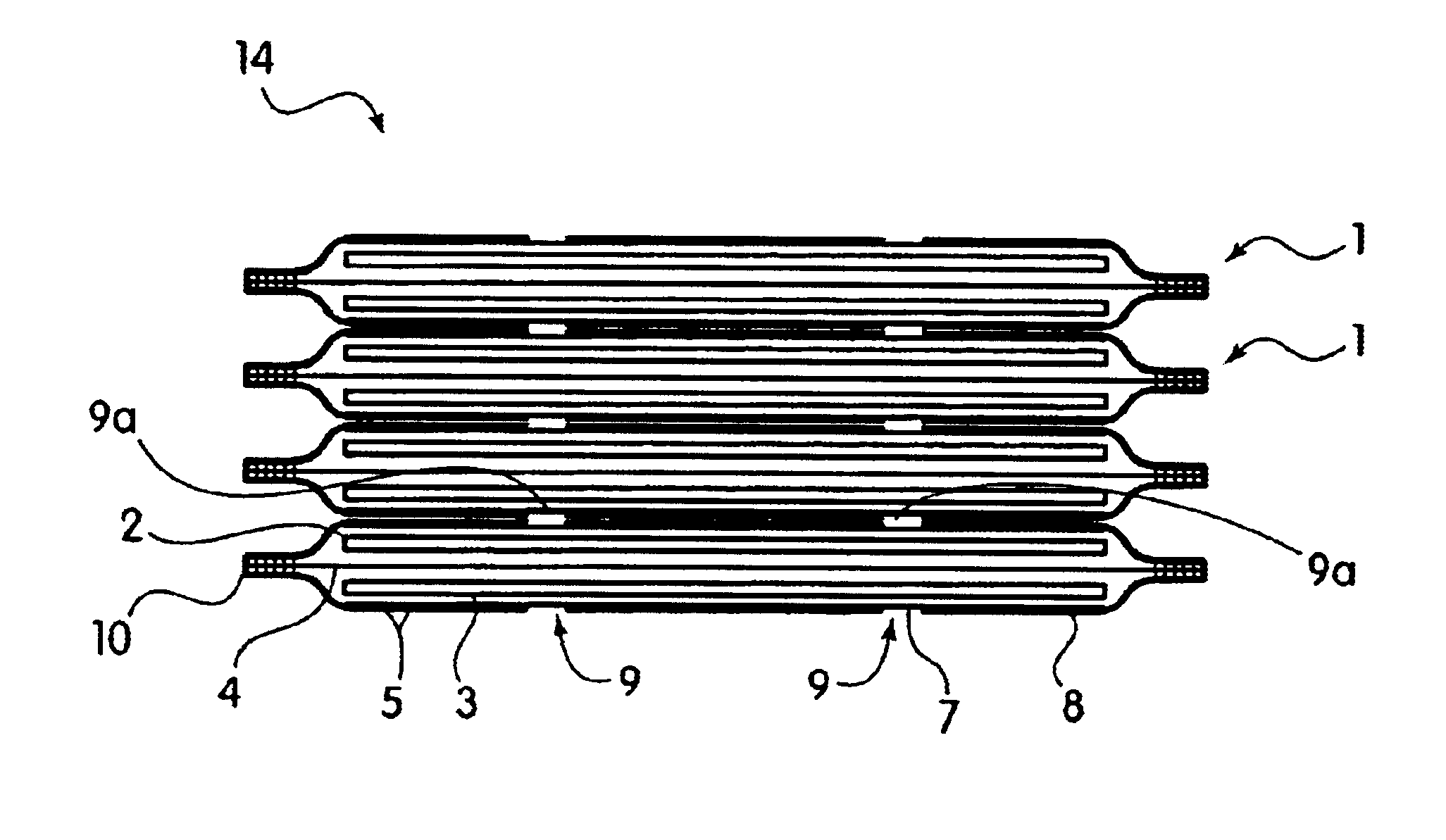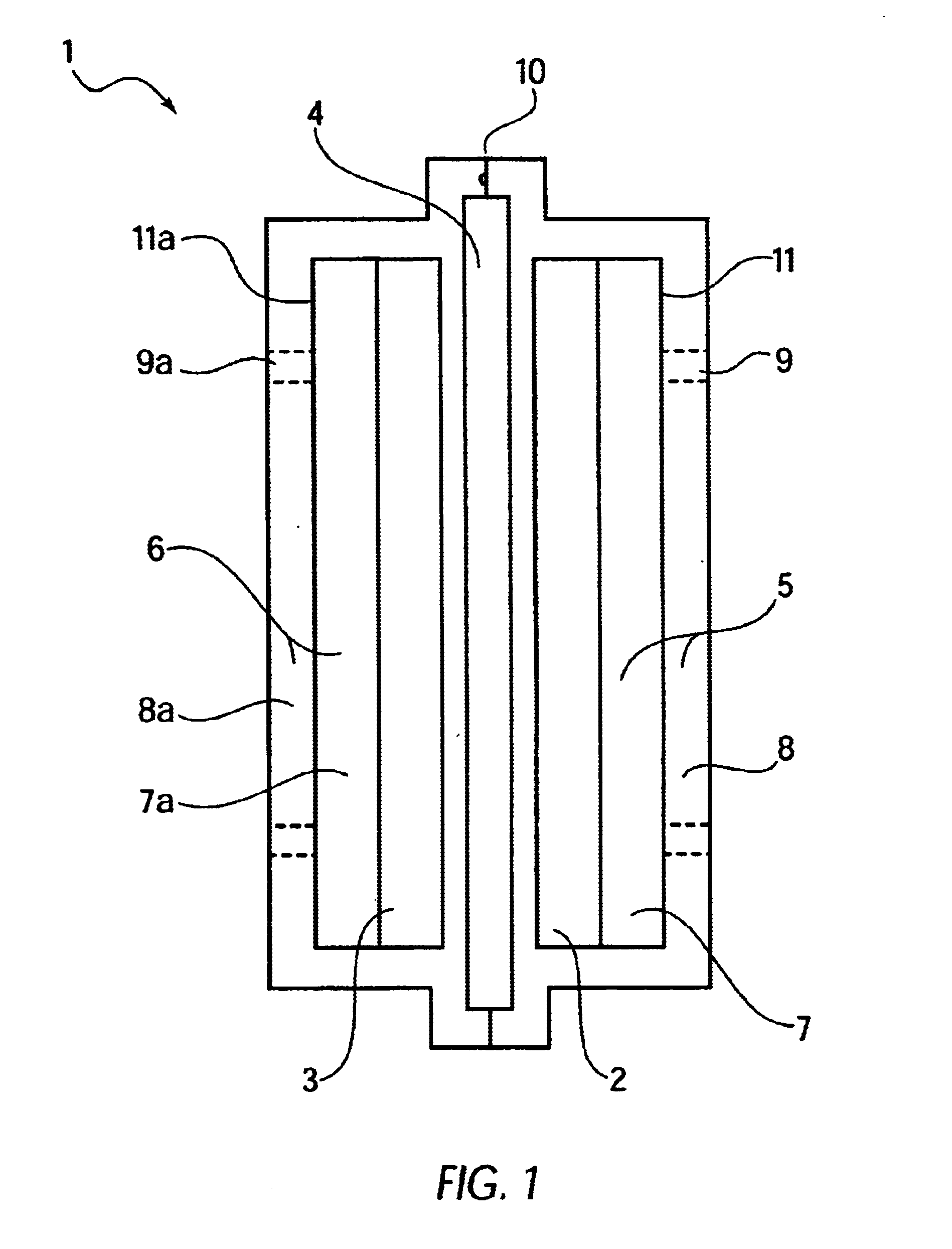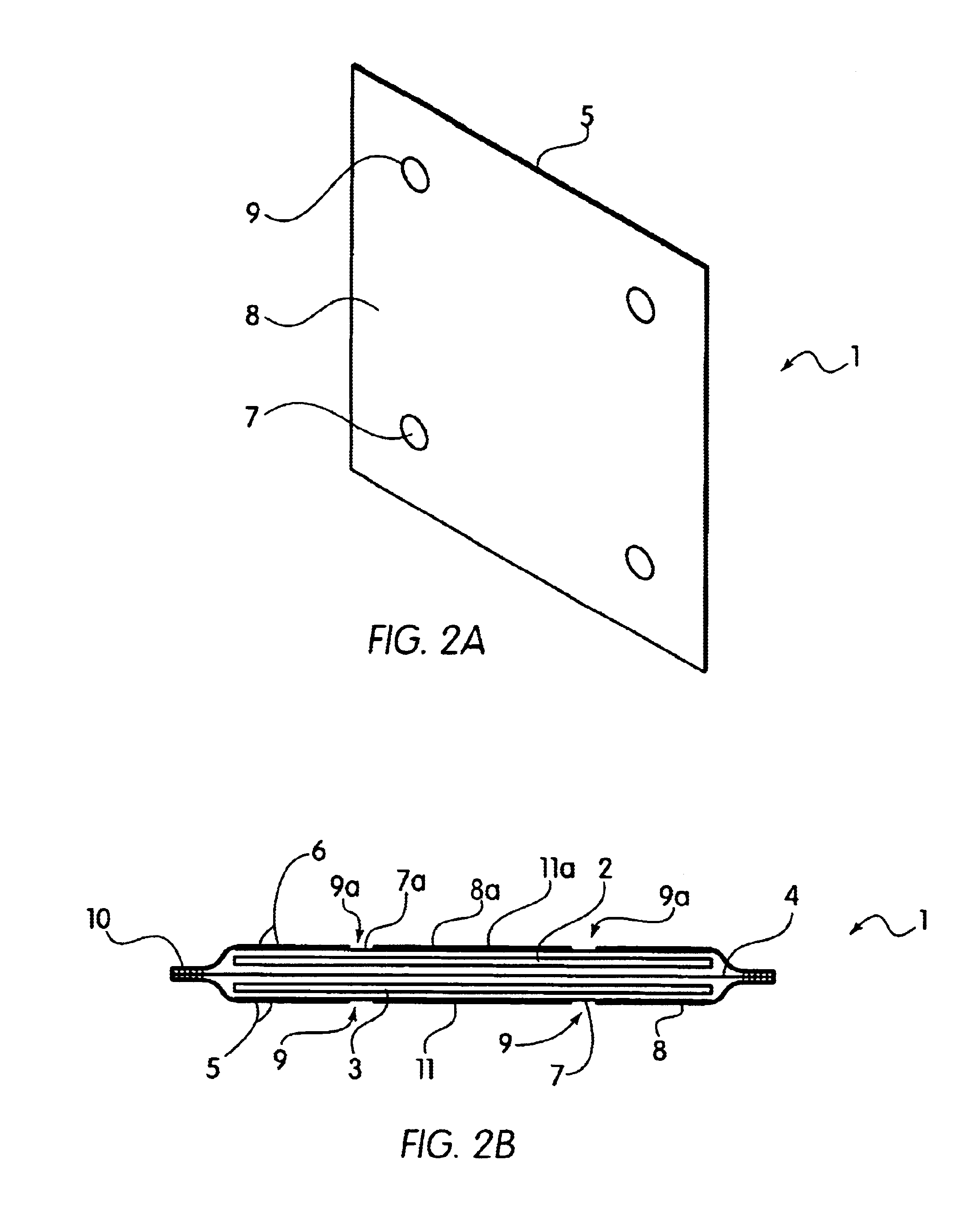Bipolar electrochemical battery of stacked wafer cells
a technology of bipolar electrochemical batteries and wafer cells, which is applied in the direction of cell components, flat cell groupings, nickel accumulators, etc., can solve the problems of difficult to achieve the proper combination of these characteristics, and the energy storage capacity of the active components of the cell cannot be fully utilized. achieve the effect of improving energy storage capacity, stable and efficient battery performance, and long-term chemical and physical stability
- Summary
- Abstract
- Description
- Claims
- Application Information
AI Technical Summary
Benefits of technology
Problems solved by technology
Method used
Image
Examples
example 1
[0073]A single wafer cell including one positive nickel electrode and one negative metal hydride electrode was fabricated in an arrangement as shown in FIG. 1. The electrodes were prepared according to the procedures described in U.S. Pat. No. 5,393,617. In particular, the hydride electrode was prepared by blending a mixture of 45 grams of a Mischmetal hydride alloy, 0.5 grams of PTFE (Teflon®) powder and 4.5 grams of CuO. The Mischmetal hydride alloy used herein was comprised of an alloy of Mn Ni3.5Co0.7Al0.8. The hydride alloy, received as about ⅛ to ¼ inch particle fragmented by dry pressure hydrating five times between vacuum and 200 psi to produce an average particle size of about 50 microns. The mixture was blended in a high speed blender for two 30-second periods. The mixture was then rolled out to a layer approximately 0.060 inch thick, and then folded and rolled to a 0.060 inch thickness in a direction about 90 degrees from the original direction. The above folding and roll...
example 2
[0081]For comparison with the present invention and to demonstrate the advantageous results of the invention, a single cell was constructed as described in Example 1 except that the two sheets of 2 mil nickel foil, 3×3 inch square, of Example 1 were increased to 3¼×3¼ inch square, and the two 3 mil layers of polypropylene film that were 3¼×3¼ inch square were not utilized. The nickel foil sheets were then epoxy bonded directly around the perimeter of the cell. This edge seal served for temporary testing, but may allow electrolyte leakage under endurance testing.
[0082]This cell configuration is not the subject of the present invention because it did not employ Applicant's advantageous laminations 5 and 6, as described herein. However, testing of this cell configuration under the conditions described in Example 1 was useful to demonstrate the advantages of Applicant's present design. In particular, testing demonstrated that the current power capacity of a cell without the outer polyme...
example 3
[0083]In further contrast to the present invention, a cell was assembled and tested as in Example 1 except that the outer layers of the cell were made of a carbon-filled conductive polymeric material of polyvinyl chloride (pvc) nominally 4 mils thick and the outer edges of the cell were heat sealed to a non-conductive polymeric material of pvc to form the edge seal, as described in U.S. Pat. No. 5,393,617. Accordingly, Applicant's laminations of metallic foil / perforated polymeric layer were not employed.
[0084]This example demonstrated the less effective high rate current capabilities of the carbon-filled conductive outer film, as compared to that of Applicant's invention including its advantageous laminations. In particular, FIG. 7 shows the voltage current characteristics of this cell. A comparison of FIGS. 5 (re: Example 1) and 7 demonstrates that the present invention has a higher rate capability.
PUM
| Property | Measurement | Unit |
|---|---|---|
| Thickness | aaaaa | aaaaa |
| Thickness | aaaaa | aaaaa |
| Electrical conductor | aaaaa | aaaaa |
Abstract
Description
Claims
Application Information
 Login to View More
Login to View More - R&D
- Intellectual Property
- Life Sciences
- Materials
- Tech Scout
- Unparalleled Data Quality
- Higher Quality Content
- 60% Fewer Hallucinations
Browse by: Latest US Patents, China's latest patents, Technical Efficacy Thesaurus, Application Domain, Technology Topic, Popular Technical Reports.
© 2025 PatSnap. All rights reserved.Legal|Privacy policy|Modern Slavery Act Transparency Statement|Sitemap|About US| Contact US: help@patsnap.com



